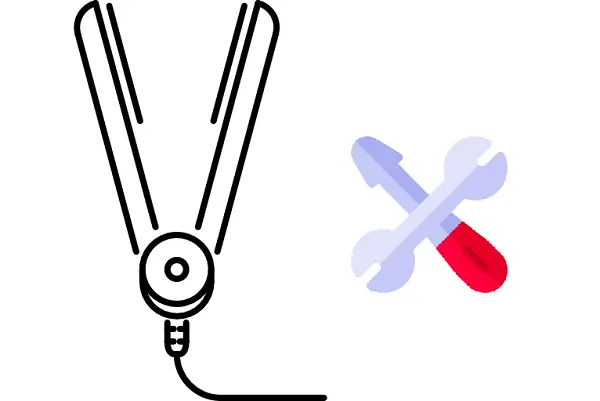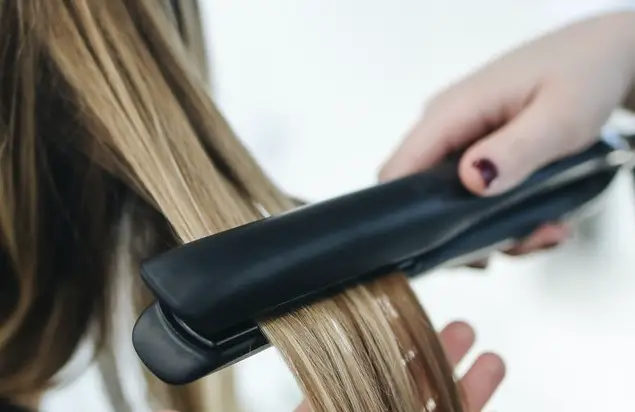The straightener is sometimes essential in a hair routine. BaByliss, an expert in the design of beauty devices, and in particular straighteners, has understood this well by releasing ever more technical and innovative products. However, like any electronic device, it may encounter problems. operating problems.
And among one of the problems most often encountered: a Babyliss straightener that no longer heats up. Despite the relative simplicity of a straightener's device, many components are susceptible to failure and lead to the malfunction you are experiencing. If you have electrical clearances, you can then try to carry out a self-repair on your straightener. Otherwise, it will certainly be better to contact a professional.
Why does your BaByliss straightener no longer heat up?
When your Babyliss straightener no longer heats up, many components may be at the origin:
- La resistance thermal is faulty
- Le fuse grilled
- Le thermostat is worn or broken
- A connectors is damaged
- A component has dropped on the electronic card
The failure of one of these components can come from an accidental fall or shock, but also quite simply from natural wear and tear. Indeed, as and when used, the components will tire and wear out. After several years of use, they eventually fail and cause a problem on your hair straightener, such as the one you are having.
Note that if only one of the heating plates of your BaByliss straightener does not heat up, the failure is probably more easily identifiable because it will most certainly come from a damaged connector.
How to repair a Babyliss hair straightener that does not heat up?
When your Babyliss straightener no longer heats up, the fault is therefore of hardware origin. It will then be necessary to disassemble the frame of the device to test its various components and replace the culprit of the breakdown. These manipulations require electronic clearances because there is a risk of electric shock and irreversible damage to the device.
If you are not a handyman and you have no electrical knowledge, we strongly advise you to call on a professional repairman. Contrary to what one might think, the repair of a straightener is often inexpensive. If your BaByliss straightener that refuses to heat up is still entitled to a guarantee, immediately contact the after-sales service of the retailer or the BaByliss brand. Under no circumstances should you dismantle it, as this would invalidate your warranty rights.
If you want to carry out the manipulations yourself, remember to turn off your hair straightener. Then, you will need to remove the main screw which is located at the base of the straightener, gently remove the straightener, then remove the screws which hold the covers of the arms of the straightener. Note that as BaByliss straightener models are all different, their assemblies and components may differ. The manipulations described below therefore remain general.

Check the BaByliss straightener thermostat
Si you can no longer adjust the temperature of your BaByliss straightenerand it turns on but turns off a few seconds after heating up or that he too hot although you have set it to a low temperature, the problem is probably the thermostat. It is located in the hull, under the temperature adjustment buttons. The thermostat is equipped with a sensor that regulates and maintains the correct operating temperature of the hair straightener. It can be damaged or broken following a shock, or simply be too worn after repeated use.
You will then have to check it by carrying out a continuity test with your multimeter. If you confirm that the thermostat of your BaByliss hair straightener is defective, it will have to be replaced with an identical thermostat by soldering it on the circuit in place of the old one.
Check the resistance of the heating plates
When your BaByliss straightener turns on but does not heat up, thermal resistance is probably responsible for the failure.
All BaByliss straighteners are equipped with two plates inside where there are electrical resistances that allow the plates to heat up. These resistors are connected to the electronic card (two wires coming out of the plates and which are connected to the card). It will then be necessary to test the electrical current of the resistors using a multimeter set to ohmmeter. Attention, this manipulation is done well off! If you find that the straightener does not heat up because of the resistance of the plates, then it will have to be replaced using pliers and a soldering iron.
Si a single plate of your BaByliss straightener no longer heats up, you will only have to remove the cover of the defective plate and check that its connectors are in good condition. Indeed, very often the culprit turns out to be a cut, damaged or disconnected wire. If the wires appear to be in good condition, then it will be necessary to test the heating resistance of the plate. If it is defective, you will probably need to replace the entire heating element (the heating plate as a whole).
Check the electronic board of the straightener
At the level of the LED indicator of your BaByliss straightener, is generally an electronic card which allows you to check that all the components of the straightener are working. This circuit board is in a way the brain of the straightener. When it breaks down or an elementary component that composes it is damaged, it can no longer manage the other elements of the straightener and it can then refuse to heat.
Le board electrical test is carried out under voltage with a multimeter set to voltmeter. It will be necessary that the supply voltage of the card is approximately similar to those of the output voltages of the card (about 220V). If the output voltages are not correct, then the card is defective and it will have to be replaced by a similar reference.
Check the BaByliss straightener fuse
Finally, it may be that your BaByliss straightener no longer heats up because its thermal fuse has blown. Indeed, the fuse is responsible for the safety of the device. If it detects an abnormally high temperature, the fuse blows to disconnect the electrical circuit. It thus prevents the risk of fire and irreversible damage to another component.
The fuse is usually located at one of the plates of the straightening iron. Then check if the fuse has blown by performing a continuity test. If the fuse is defective, you will need to replace it with an identical fuse so that your straightener can heat up normally again.
Call a professional repairer
If your BaByliss straightener still does not heat up, if you are unable to identify the origin of the problem or if you do not have the necessary skills to carry out the manipulations, then you will need to call a professional. professional repairman.
If your straightener is still entitled to a warranty, including the manufacturer's legal warranty of 2 years in France, contact BaByliss after-sales service via the online form or by telephone at 0327707805 (France). You should get your device repaired or replaced free of charge. In the event that your straightener is no longer entitled to the guarantee, you have two options: contact a professional repairer and ask him for an estimate of the price of the repair or buy a new device.


My babyliss heartstrate plate is not heating this is new i bought from saudi arabia on lulu market and now i am in nepal so how can i manage because when i buy in their i was not open and now i open then i see that this plate is not heating.
Hello,
Is this an original product (not a counterfeit)? If the product is an original and you still have the purchase invoice, then you can contact the Babyliss after-sales service in your country to see if an exchange is possible. If unfortunately you do not meet all the conditions required to qualify for an exchange, then there is nothing else to do but replace the straightener or request a repair from a professional repairer, remembering to ask for an estimate of the cost of the repair beforehand.